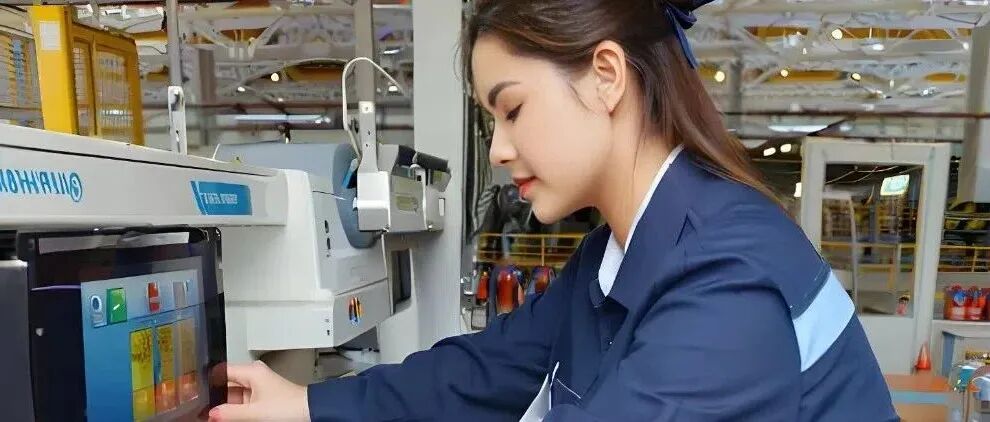Introduction
Having a faulty output point in a PLC is a troublesome event, but there are several solutions available. For instance, writing an IO mapping in the program is a great idea.As an important component of PLC programs, the design quality of IO mapping directly affects the maintainability and scalability of the program.By implementing IO mapping in PLC programs, it allows for flexible modification of input and output points through a host computer or touchscreen, without the need to frequently alter the main program logic. Below is a comprehensive analysis of the specific implementation methods and considerations:
1.Decoupling Hardware from Programs:1. Independence from Physical Addresses:IO mapping establishes a correspondence between physical input/output devices and the internal logical addresses of the PLC. The program is written based on the mapped logical addresses rather than the actual physical addresses of the hardware.When hardware IO points change due to faults or equipment replacement, only the mapping relationship needs to be modified, and the program logic remains unchanged.For example, if a sensor originally connected to I0.0 is moved to I0.1 due to a fault, by using IO mapping, the mapping table can be updated to reflect that I0.0 now corresponds to I0.1, and the logical address used in the program remains unaffected, continuing to operate normally.2. Flexible Hardware Replacement:It facilitates the replacement of hardware devices of different specifications or models. The physical IO addresses of devices from different manufacturers or models may vary. With IO mapping, even if the physical address changes due to equipment replacement, the program can adapt to the new device by adjusting the mapping relationship without extensive modifications to the program code. 2.Centralized Management and Modification:1. Single Point Modification Mechanism:When IO mapping is not used, if the same IO point is used in multiple places in the program, changes require searching and replacing each instance, which is prone to omissions and errors. After using IO mapping, the actual addresses and logical addresses of all IO points are centralized in the mapping table.To change an IO point, only one modification in the mapping table is needed, and the new mapping relationship is automatically applied throughout the program. For instance, if the output point Q0.0 is used in multiple places in the program and needs to be changed to Q0.1, simply modifying the corresponding relationship in the mapping table suffices, without the need to search through the program code line by line for Q0.0.2. Simplifying Maintenance Difficulty:As project scale increases and program logic becomes more complex, the number of IO points increases. Without IO mapping, later maintenance and modification of IO point addresses can be like searching for a needle in a haystack. IO mapping centralizes IO address management, allowing maintenance personnel to quickly locate modification points, significantly improving maintenance efficiency and reducing the risk of errors.
2.Centralized Management and Modification:1. Single Point Modification Mechanism:When IO mapping is not used, if the same IO point is used in multiple places in the program, changes require searching and replacing each instance, which is prone to omissions and errors. After using IO mapping, the actual addresses and logical addresses of all IO points are centralized in the mapping table.To change an IO point, only one modification in the mapping table is needed, and the new mapping relationship is automatically applied throughout the program. For instance, if the output point Q0.0 is used in multiple places in the program and needs to be changed to Q0.1, simply modifying the corresponding relationship in the mapping table suffices, without the need to search through the program code line by line for Q0.0.2. Simplifying Maintenance Difficulty:As project scale increases and program logic becomes more complex, the number of IO points increases. Without IO mapping, later maintenance and modification of IO point addresses can be like searching for a needle in a haystack. IO mapping centralizes IO address management, allowing maintenance personnel to quickly locate modification points, significantly improving maintenance efficiency and reducing the risk of errors. 3.Enhancing Program Portability and Universality:
3.Enhancing Program Portability and Universality:
1. Ease of Project Porting:
When porting PLC programs to other similar projects or devices, the hardware configurations may differ, and the IO address allocations may vary. With IO mapping, only the mapping table needs to be adjusted according to the new project’s hardware situation, and the main program logic does not need to be modified to run in the new environment.
For example, when a PLC program is ported from an old production line to a new one, if the hardware IO address arrangement of the new production line is different, the address correspondence can be quickly reconfigured through IO mapping, allowing the program to adapt to the new production line.
2. Writing Universal Programs:
For programs that need to be applied in various scenarios or devices, IO mapping allows the program to be independent of specific hardware IO addresses. When writing the program, it is based on the mapped logical addresses, and in different application scenarios, the mapping relationship can be adjusted to adapt to the actual hardware, enhancing the program’s universality and reusability.
For instance, when developing a PLC control program that can be used for different models of machine tools, by utilizing IO mapping, the mapping table can be adjusted according to the hardware configuration of different machine tools, allowing the same program to control different machine tools.
We welcome everyone to leave comments and engage in discussions!